

West Texas Magic
There is a kind of mad spirit in that country: one that isn’t afraid of a little discomfort or loneliness; one that is slightly unhinged—beautiful but prickly and direct. It’s not purple mountains majesty and it’s not cartoon cactuses (you gotta go to Arizona for those), it’s a long slow look and a deep breath, it’s orange dirt slaked up against cobalt skies. There’s beauty in the West Texas desert that makes me thirsty just thinking about it.
I am no cowboy. I didn’t even get my first pair of boots until a few weeks ago; I drive a 2010 Prius and I never learned how to ride a horse, but the romance and mythology of the cowboy is infectious in that landscape—something about the rough and tumble of it all feels like waking up to something real instead of drifting into sentimentality.
My first trip out there was in 2014 to attend the annual Cowboy Poetry Gathering in Alpine, Texas. If you haven’t heard of it, it’s about as big a deal as you’ll find west of Fort Stockton. People travel from all over the nation to listen to and recite poetry written by real cowboys. I’ll tell you what I learned there: the cowboy is alive and he invites us all to test our courage in the vast, slow quiet of West Texas.
By the time I attended my fourth annual Cowboy Poetry Gathering, I made the acquaintance of one of the last great cowboy poets, Joel Nelson. Joel is a Texan—made his living all his life atop a horse. Joel describes that slow quiet so simply in his poem, “Kings, Queens and Mountain Kingdoms:
“A billion points of starlight dot the iridescent sky
and the full moon hasn’t quite yet gone to rest,
It silhouettes the mountain peaks and mesas standing high
above the rocky foothills to the west, to the west,
and the breeze is stirring lightly in the west.”
But it’s not all cowboys out there. Maybe you’ve heard about Marfa Texas and the tourists that travel there from Los Angeles carrying designer bags, the artists that moved there from New York City, and the coffee shops with $10 avocado toast—it’s all true. Don’t take me for a hater; I’ve enjoyed it as much as the next traveler, but anyone who thinks that is what West Texas is about is missing the point. Luckily the closest major airport is in El Paso three hours to the north and it’s at least a six-hour drive from Austin or San Antonio. It’s no small investment to make the trek, so don’t bother going all that way just for the cool points.
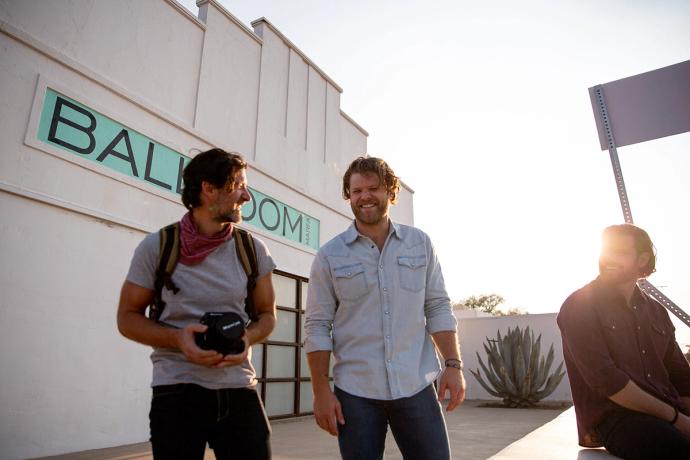
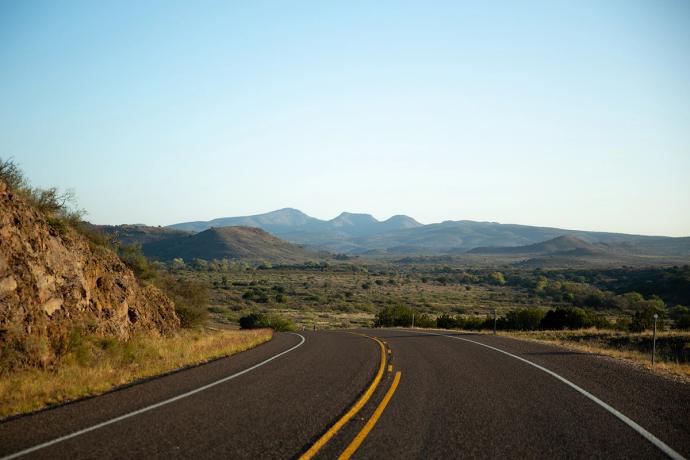

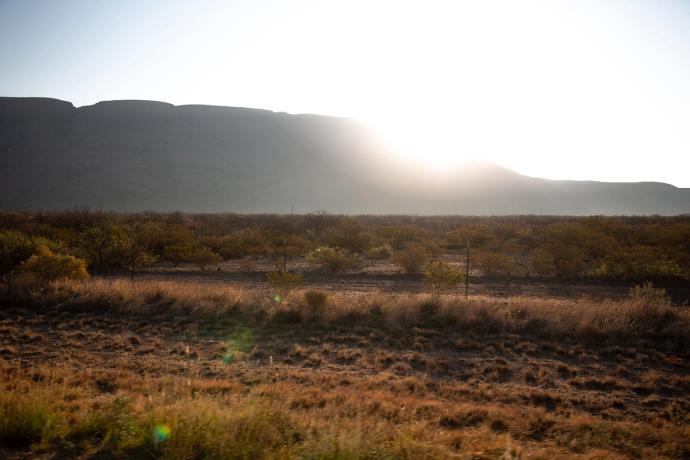
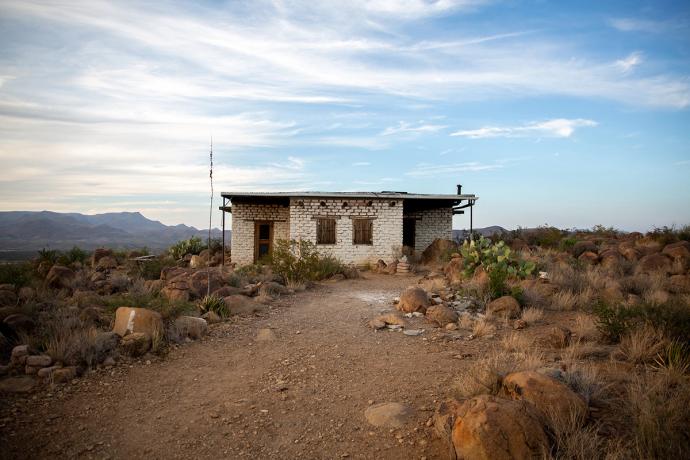
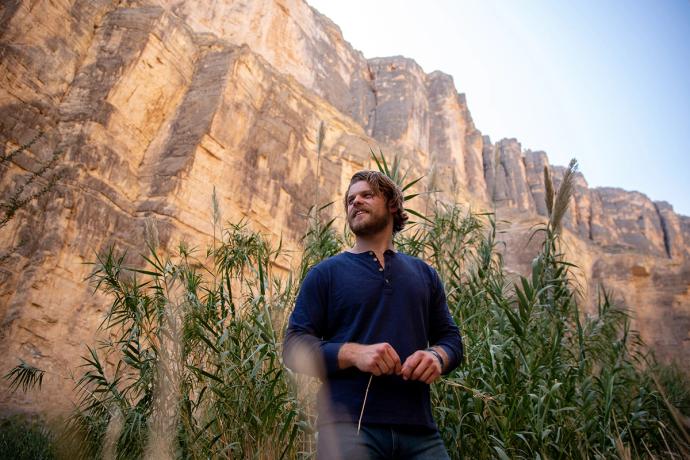
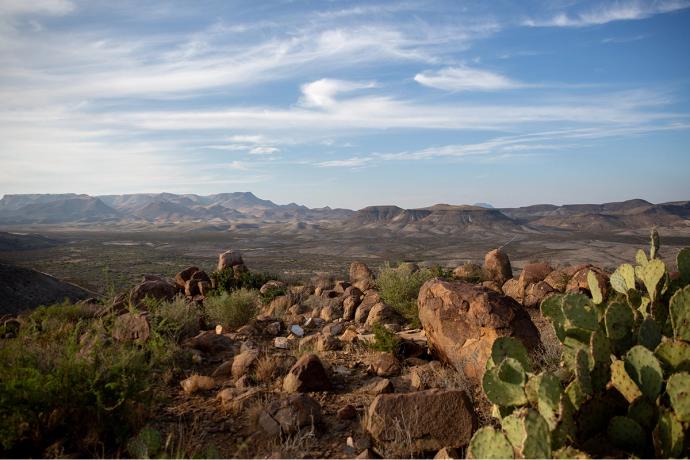

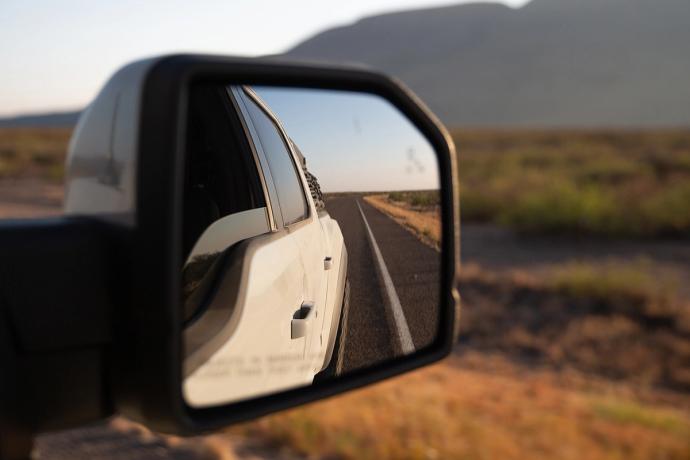
On my most recent journey West, we decided to go farther in to look for even deeper magic. Nestled between Big Bend National and State parks along the Mexico border is Terlingua, at least two hours drive from Marfa with nothing but dirt and hills the whole way. My buddies and I discovered an old stone hut available for nightly rent on a few hundred acres at the end of 30 miles of dirt roads. Standing next to the hut, I could see a giant, nameless mesa to the north, The Chisos mountains fading into the horizon directly south and Mexico just beyond that—three hundred and 60 degrees of dry, dusty desert. The sunsets out there take so long that by the time you find yourself in the dark you have no idea when the day became night. We stayed up late and refused to make a fire for fear it would hinder our view of the night sky. We leaned back in our chairs and looked up to watch The Milky Way careened through the void shedding shooting stars as it went. We returned to our vigil at sunrise with mugs of hot coffee and I marveled at a few birds searching for sustenance in that desolate place. You can’t possibly imagine how sweet that silence is and the best part is, in West Texas, the silence lasts all day long.

Credits
Words by
Richard Carpenter
Photos by
Cory Tran